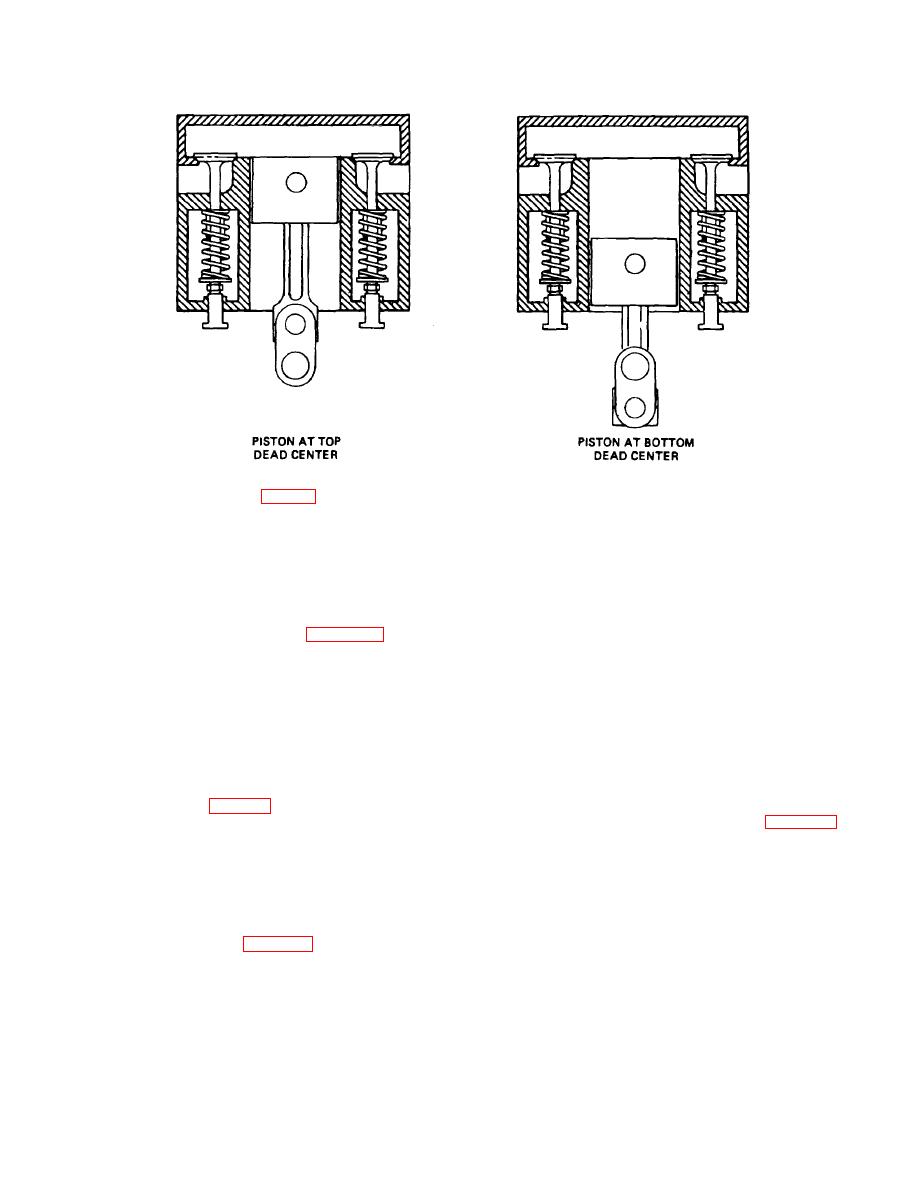
| Tweet |

Custom Search
|
|

|
||
 TM 9-8000
power stroke, the exhaust valve opens, beginning the
exhaust stroke. As the piston moves upward toward top
begins at top dead center. As the piston moves down,
dead center, it pushes the burnt gases from the fuel and
the intake valve opens. The downward movement of the
air mixture out of the combustion chamber through the
piston creates a vacuum in the cylinder. The vacuum
exhaust port. As the piston reaches top dead center,
causes a fuel and air mixture to be drawn through the
ending the exhaust stroke, the exhaust valve closes. As
intake port Into the combustion chamber. As the piston
the exhaust valve closes, the intake valve opens to begin
reaches bottom dead center, the Intake valve closes.
the Intake stroke in the next cycle.
2-6.
Compression Stroke (B, Fig.
The
2-9. Valve Train. It is obvious in paragraphs 2-5 thru 28
compression stroke begins with the piston at bottom
that it is very important to operate the valves in a timed
dead center. Both the intake and the exhaust valves
sequence. If the exhaust valve opened In the middle of
remain closed. As the piston moves toward top dead
the intake stroke, the piston would draw burnt gases into
center, the amount of space in the upper cylinder gets
the combustion chamber with a fresh mixture of fuel and
smaller. The fuel and air mixture is compressed and the
air. As the piston continued to the power stroke, there
potential energy in the fuel is concentrated.
The
would be nothing in the combustion chamber that would
compression stroke ends when the piston reaches top
burn. The engine is fitted with a valve train to operate the
dead center.
valves.
A simplified valve train is illustrated in A, figure 2-9. The
top dead center, ending the compression stroke, the
camshaft is made to rotate with the crankshaft through
spark plug (para 15-3) ignites the compressed fuel and
the timing gears. The raised piece on the camshaft is
air mixture. Because both valves are closed, the force of
called a cam lobe. As illustrated in view B, the valve
the resulting explosion pushes the piston down, giving a
spring Is designed to hold the valve closed.
powerful driving thrust to the crankshaft. The power
stroke ends as the piston reaches bottom dead center.
The cam lobe contacts the bottom of the lifter as it
rotates with the camshaft, as shown in view C. As
reaches bottom dead center, ending the
Change 1 2-4
|
||
 |
||